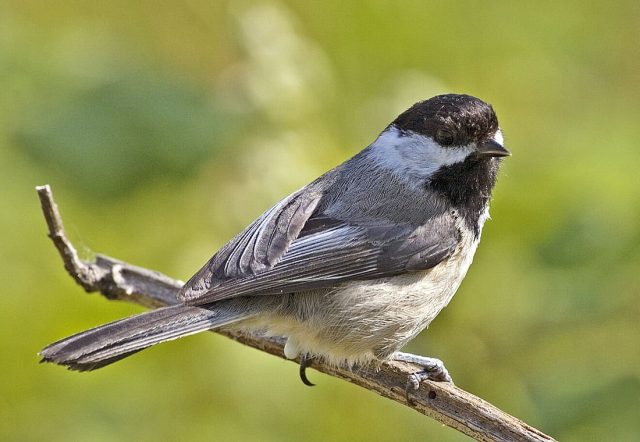Bird Identification – Black-capped chickadee
The black-capped chickadee (Poecile atricapillus) is a small, nonmigratory, North American songbird that lives in deciduous and mixed forests. It is a passerine bird in the tit family Paridae.
It is the state bird of both Maine and Massachusetts in the United States, and the provincial bird of New Brunswick in Canada. It is well known for its capacity to lower its body temperature during cold winter nights as well as its good spatial memory to relocate the caches where it stores food, and its boldness near humans (sometimes feeding from the hand).
The black-capped chickadee has a black cap and “bib” with white sides to the face. Its underparts are white with rusty brown on the flanks. Its back is gray and the tail is normally slate-gray.
This bird has a short dark bill of 8–9.5 mm (0.31–0.37 in), short rounded wings 63.5–67.5 mm (2.50–2.66 in), a tarsus of 16–17 mm (0.63–0.67 in) and a long tail at 58–63 mm (2.3–2.5 in). Total body length is 12–15 cm (4.7–5.9 in), wingspan is 16–21 cm (6.3–8.3 in) and body mass is 9–14 g (0.32–0.49 oz). Sexes look alike, but males are slightly larger and longer than females.

